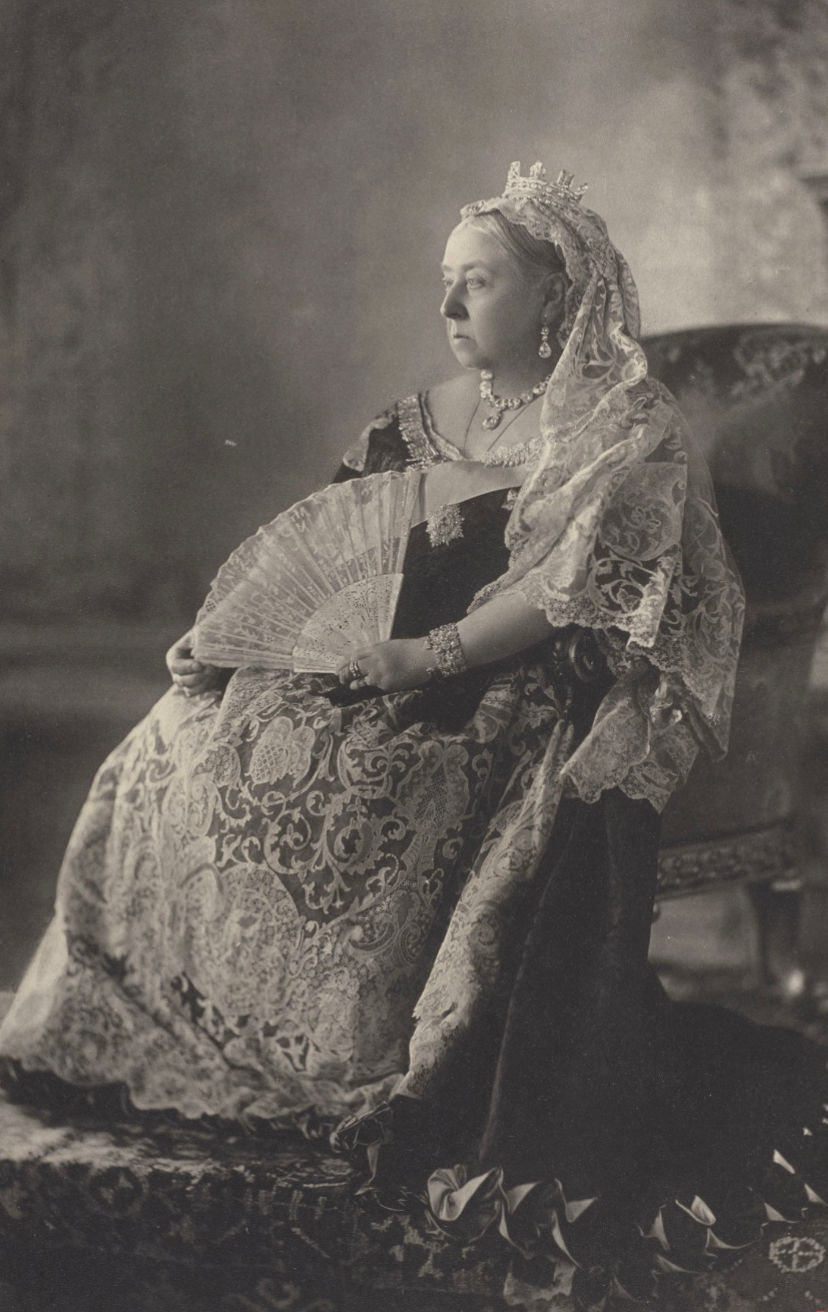Queen Adelaide's Fringe Necklace
- Victoria Regina
- Dec 28, 2023
- 2 min read
Updated: Jan 1, 2024

Queen Adelaide wearing the fringe as a necklace.
The diamond fringe was one of the first major pieces of jewellery that Victoria wore following her accession. It originally belonged to her aunt, Queen Adelaide, the wife of King William IV. In 1831 the year that he and Adelaide were crowned Queen Victoria's uncle King William IV commissioned Rundell and Bridge to make a necklace for his wife. According to Victoria’s 1896 jewel inventory, the diamonds used in the fringe originally belonged to William’s father, King George III. The diamonds were apparently taken from pieces of jewellery that had belonged to both George III and his wife, Queen Charlotte. Sir Hugh Roberts describes it as follows: “Sixty brilliant-set graduated bars, the central bars in cushion-cut and pear-shaped stones, divided by 60 graduated brilliant-set spikes; an extra six small graduated bars and five spikes detached; tiara fittings removed.”

The First Of May by Franz Winterhalter
Royal Collection Trust / © His Majesty King Charles III 2023
Queen Victoria inherited the diamond fringe in 1837 upon her accession to The Throne. One of Queen Victoria's first appearances in the fringe tiara took place in November 1837. She wore the tiara to Drury Lane Theatre. An appearance that was commemorated in a contemporary illustration. In a portrait of Victoria at Drury Lane Theatre the height of the diamond fringe tiara is rather exaggerated by the artist, Edward Parris making it seem taller than it really was.
Victoria continued to wear the fringe during the early decades of her reign. It was immortalized by Winterhalter in The First of May 1851, a painting which features Victoria and Albert with their baby son, Prince Alfred, and his godfather, the Duke of Wellington. Queen Victoria also wore the tiara to the opening of Prince Albert’s Great Exhibition. Luckily, even though it contained diamonds that belonged to King George III and Queen Charlotte, it managed to escape the Hanoverian Claim of 1858. Queen Victoria continued to wear the diamond fringe after Prince Alberts death in 1861 but she preferred to have it removed from its mount. Victoria often wore it as an embellishment around her neckline on court dresses, most notably seen in her Diamond Jubilee portraits.

Queen Victoria's Diamond Jubilee portrait 1893
Royal Collection Trust / © His Majesty King Charles III 2023
In 1910, the necklace was passed down to King George V and Queen Mary. Just like Queen Victoria, Queen Mary had the tiara mounted back onto its frame which she wore in various early portraits of her as Queen. Although in 1919 Mary was unsatisfied with the necklace due to its irregular shape and commissioned a new tiara to be made using recycled gold, silver and diamonds from a fringe necklace given to her by Queen Victoria on her wedding day.



Comments